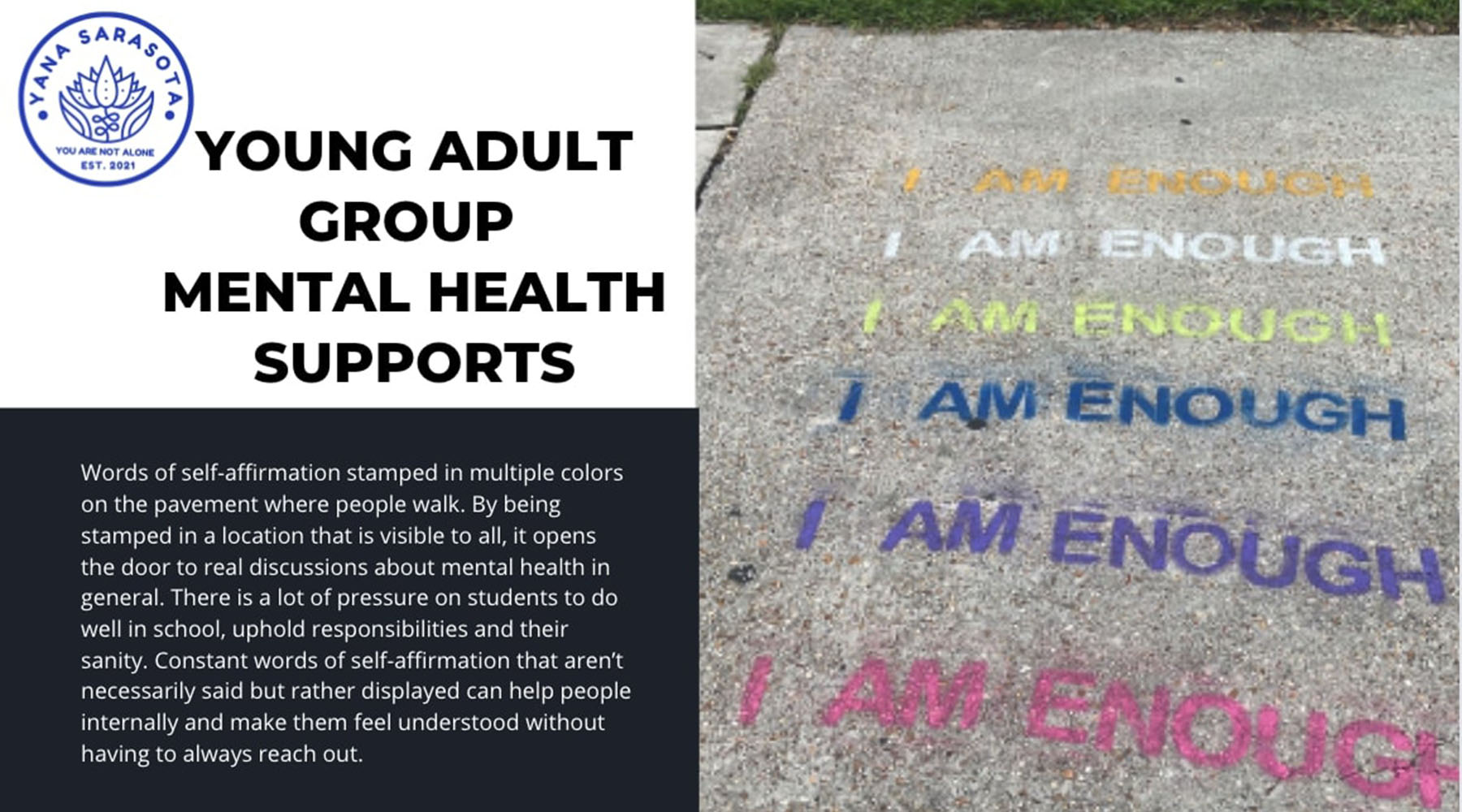By Marc R. Masferrer, University Communications and Marketing
As a former journalist, Margaret McGladrey, an assistant professor in the Department of Mental Health Law and Policy on the University of South Florida Sarasota-Manatee campus, appreciates the power of words to tell a compelling story. But when it comes to certain topics, like young adults and teenagers comfortably sharing about their mental health challenges, a photograph may be the "safer,” more effective way to connect with an audience.
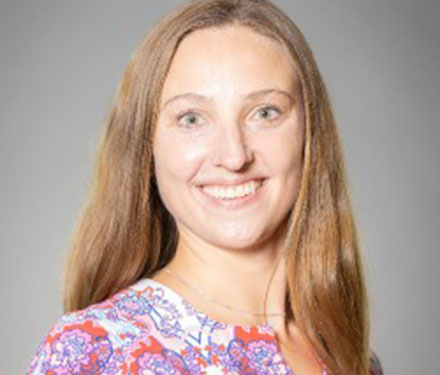
Margaret McGladrey
That was what drove McGladrey’s recent work with Youth Move Suncoast and the National Alliance of Mental Illness of Sarasota and Manatee Counties, a Photovoice project in which groups of participants, ages 14 to 29, used cameras to illustrate topics related to mental health and addiction. McGladrey said she began working with Youth Move Suncoast, a program housed under NAMI, last fall as the agency sought to increase its peer support specialists’ engagement with young people, post-pandemic, to address their anxiety, depression and other mental health issues.
"As I was building my relationship with them last fall, they discussed needing to do some focus groups with our participants to understand what's going on here,” McGladrey said. “Photovoice is like a focus group on steroids.”
Photovoice is a 30-year-old research method in which participants use photography to develop and deliver messages and promote dialogue about important issues. McGladrey said it is particularly suited to addressing potentially stigmatized topics like mental health because it allows participants to decide how much of their identity they disclose. Participants have the power to tell their stories and share their unique perspectives, in ways in that they are most comfortable and still capture the attention of decision-makers.
“Why PhotoVoice works, is that you're able to show other viewers, especially those in power, what you're seeing from your vantage point that they might not from theirs,” McGladrey said.
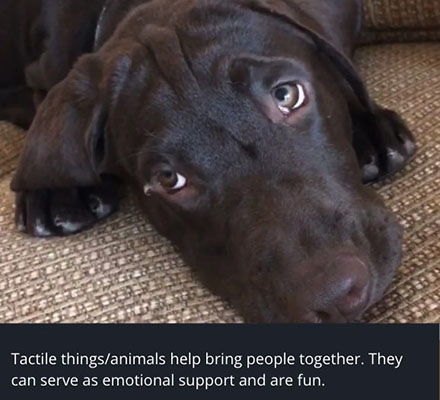
In the NAMI project, 19 participants were recruited from among peer educators at Healthy Teens, a Bradenton-based youth advocacy group; participants in Teen Court of Sarasota, a nonprofit working to reduce juvenile delinquency; New College of Florida; and the You Are Not Alone (YANA) drop-in center hosted by NAMI. Before they actually went into the field to shoot their photographs, they participated in orientation and planning discussions, including on the ethics of photography and what specific topics they hoped to address. Throughout, McGladrey and students in her Voices of Behavioral Health Lab were transcribing and analyzing the discussions and sharing their notes with participants for feedback.
After the photographs were taken, participants organized them by themes and captioned them based on their earlier discussions and notes.
The photographs, which were displayed during an online and in-person showcase in May, which was Mental Health Awareness Month, were as varied as the photographers who took them, capturing unique moments in time in their own lives and spaces.
A young child playing soccer as part of a program for kids with disabilities — just as his older sibling, the photographer, had.
The phrase, “I am enough,” stamped in multiple colors on the pavement. “By being stamped in a location that is visible to all,” the caption reads, “it opens the door to real discussions about mental health.”
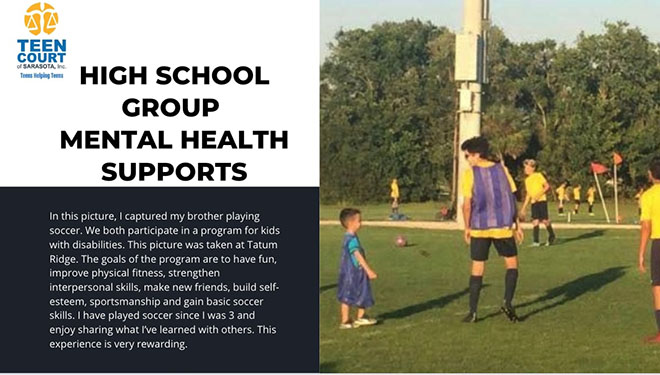
The “mesmerizing and calming” sky at sunset.
A dog’s loving gaze.
A copier/printer that, according to the caption, “represents capitalism and the need to work, the feeling of burnout, and the reality that most people have to work even they are not doing well, similar to this aging printer that we still use even though it does not print right.”
McGladrey said the project, the first direct collaboration between the USF Sarasota-Manatee campus and NAMI of Sarasota and Manatee Counties, was well received by both participants and the intended audiences. In their evaluation feedback, one participant wrote, “My biggest takeaway was that storytelling can be very powerful through photography and that being intentional in taking photos and looking at photos can change so much of our perception.”
The program was funded with grants from the Here4Youth Initiative of the Gulf Coast Community Foundation and the Charles & Margery Barancik Foundation.
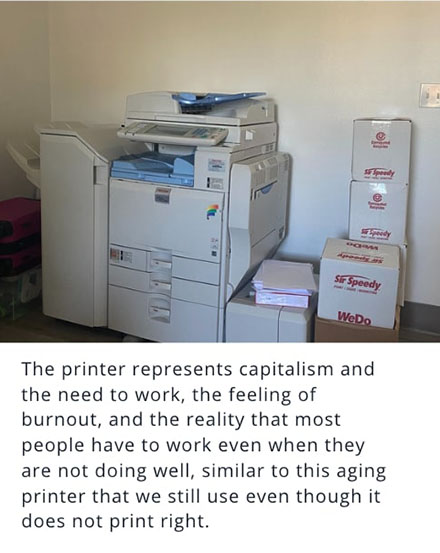
NAMI is incorporating the results into its strategic planning and sharing them with its local and national leadership. All of the photograph and caption combinations have been turned into posters and postcards that can be shared at future events, and one of McGladrey’s students will also make a presentation about the project at a statewide conference.
McGladrey — who earned a bachelor’s degree in magazine journalism and a master’s in communication, before going on to obtain a Ph.D. in sociology — had worked with PhotoVoice before, including as part of a study of the opioid epidemic in Kentucky and an internal grant funded by the College of Behavioral and Community Sciences to engage with USF faculty and staff members on mental health issues. Convincing people to speak openly about those types of experiences isn’t always viable, she said.
Sometimes, you have to give them a camera.
“The journalism background is what fundamentally informs why this method works so well for me. I'm a sociologist by training, but I’m so informed by my early exposure to the power of the combination of image and word and in telling the stories of folks who might not be in a position to tell their own stories, and how to do that respectfully and with accountability to those folks.”
